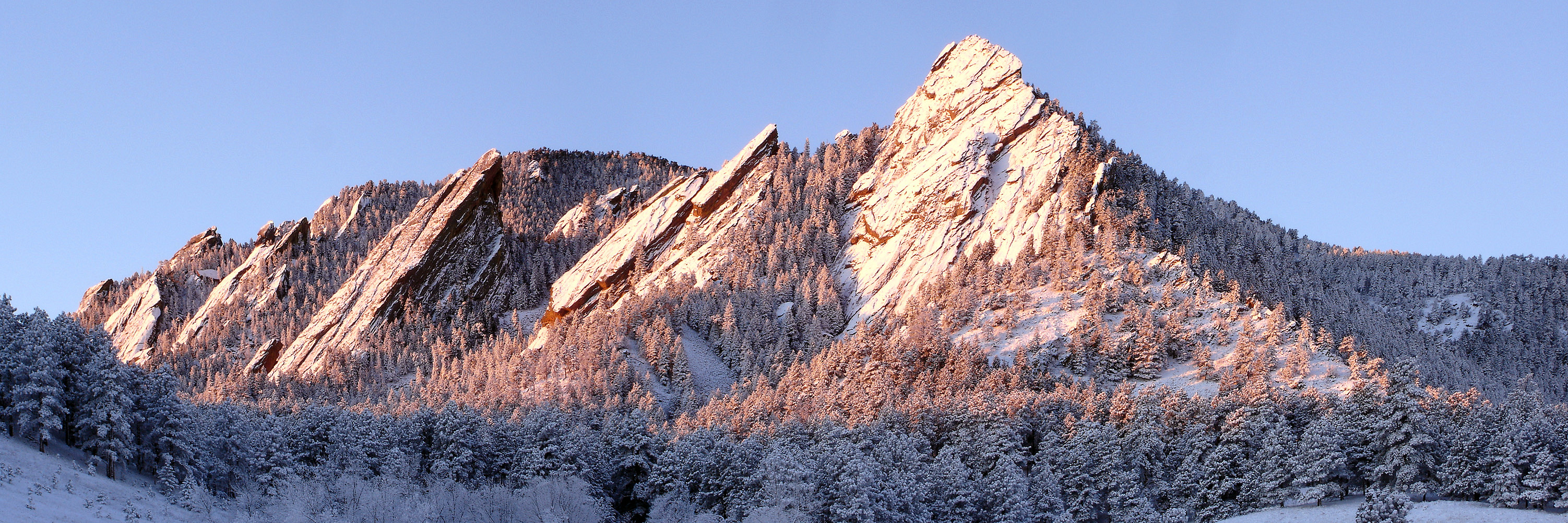|
Heidi Hammel
Heidi B. Hammel (born March 14, 1960) is a planetary astronomer who has extensively studied Neptune and Uranus. She was part of the team imaging Neptune from Voyager 2 in 1989. She led the team using the Hubble Space Telescope to view Shoemaker-Levy 9's impact with Jupiter in 1994. She has used the Hubble Space Telescope and the Keck Telescope to study Uranus and Neptune, discovering new information about dark spots, planetary storms and Uranus' rings. In 2002, she was selected as an interdisciplinary scientist for the James Webb Space Telescope. Hammel spends increasing time as a science communicator. She is the 2002 recipient of the Carl Sagan Medal given to a scientist whose communications have greatly enhanced the general public's understanding of planetary science. She was one of Discover Magazine's 50 most important women in science in 2003. In addition to her public-facing work at NASA, she became the executive vice president of the Association of Universities fo ... [...More Info...] [...Related Items...] OR: [Wikipedia] [Google] [Baidu] |
California
California is a U.S. state, state in the Western United States, located along the West Coast of the United States, Pacific Coast. With nearly 39.2million residents across a total area of approximately , it is the List of states and territories of the United States by population, most populous U.S. state and the List of U.S. states and territories by area, 3rd largest by area. It is also the most populated Administrative division, subnational entity in North America and the 34th most populous in the world. The Greater Los Angeles area and the San Francisco Bay Area are the nation's second and fifth most populous Statistical area (United States), urban regions respectively, with the former having more than 18.7million residents and the latter having over 9.6million. Sacramento, California, Sacramento is the state's capital, while Los Angeles is the List of largest California cities by population, most populous city in the state and the List of United States cities by population, ... [...More Info...] [...Related Items...] OR: [Wikipedia] [Google] [Baidu] |
Boulder, Colorado
Boulder is a home rule city that is the county seat and most populous municipality of Boulder County, Colorado, United States. The city population was 108,250 at the 2020 United States census, making it the 12th most populous city in Colorado. Boulder is the principal city of the Boulder, CO Metropolitan Statistical Area and an important part of the Front Range Urban Corridor. Boulder is located at the base of the foothills of the Rocky Mountains, at an elevation of above sea level. Boulder is northwest of the Colorado state capital of Denver. It is home of the main campus of the University of Colorado, the state's largest university. History On November 7, 1861, the Colorado General Assembly passed legislation to locate the University of Colorado in Boulder. On September 20, 1875, the first cornerstone was laid for the first building (Old Main) on the CU campus. The university officially opened on September 5, 1877. In 1907, Boulder adopted an anti- saloon ordinanc ... [...More Info...] [...Related Items...] OR: [Wikipedia] [Google] [Baidu] |
Gemini Observatory
The Gemini Observatory is an astronomical observatory consisting of two 8.1-metre (26.6 ft) telescopes, Gemini North and Gemini South, which are located at two separate sites in Hawaii and Chile, respectively. The twin Gemini telescopes provide almost complete coverage of both the northern and southern skies. They are currently among the largest and most advanced optical/infrared telescopes available to astronomers. ''(See List of largest optical reflecting telescopes)''. The National Science Foundation (NSF) of the United States, the National Research Council of Canada, CONICYT of Chile, MCTI of Brazil, and MCTIP of Argentina own and operate the Gemini Observatory. The NSF is currently (2017) the majority partner, contributing approximately 70% of the funding needed to operate and maintain both telescopes. The operations and maintenance of the observatory is managed by the Association of Universities for Research in Astronomy (AURA), through a cooperative agreement with NSF. ... [...More Info...] [...Related Items...] OR: [Wikipedia] [Google] [Baidu] |
National Solar Observatory
The National Solar Observatory (NSO) is a United States public research institute to advance the knowledge of the physics of the Sun. NSO studies the Sun both as an astronomical object and as the dominant external influence on Earth. NSO is headquartered in Boulder and operates facilities at two locations - at the 4-meter Daniel K. Inouye Solar Telescope in the Haleakala Observatory on the island of Maui, and at Sacramento Peak near Sunspot in New Mexico. NSO provides its observations to the scientific community. It operates facilities, develops advanced instrumentation both in-house and through partnerships, conducts solar research, and carries out educational and public outreach. Visiting the observatories The National Solar Observatory HQ is located on the campus of the University of Colorado, Boulder. It also has some staff on Maui, and Sacramento Peak. Telescopes operated by the observatory Haleakala Observatory * Daniel K. Inouye Solar Telescope Sacramento Peak ... [...More Info...] [...Related Items...] OR: [Wikipedia] [Google] [Baidu] |
National Optical Astronomy Observatory
The National Optical Astronomy Observatory (NOAO) was the United States national observatory for ground-based nighttime ultraviolet-optical-infrared (OUVIR) astronomy. The National Science Foundation (NSF) funded NOAO to provide forefront astronomical research facilities for US astronomers. Professional astronomers from any country in the world could apply to use the telescopes operated by NOAO under the NSF's "open skies" policy. NOAO was operated by the Association of Universities for Research in Astronomy (AURA) under a cooperative agreement with the NSF. Its headquarters in Tucson, Arizona were co-located with the headquarters of the National Solar Observatory. The budget for NOAO during the 2017 fiscal year was nearly $23 million. NOAO was founded in 1984 to join the operations of the Kitt Peak National Observatory in the United States with the Cerro Tololo Inter-American Observatory in Chile. On October 1, 2019, NOAO merged its operations with the Gemini Observatory and the ... [...More Info...] [...Related Items...] OR: [Wikipedia] [Google] [Baidu] |
Jet Propulsion Laboratory
The Jet Propulsion Laboratory (JPL) is a federally funded research and development center and NASA field center in the City of La Cañada Flintridge, California, United States. Founded in the 1930s by Caltech researchers, JPL is owned by NASA and managed by the nearby California Institute of Technology (Caltech). The laboratory's primary function is the construction and operation of planetary robotic spacecraft, though it also conducts Earth-orbit and astronomy missions. It is also responsible for operating the NASA Deep Space Network. Among the laboratory's major active projects are the Mars 2020 mission, which includes the ''Perseverance'' rover and the '' Ingenuity'' Mars helicopter; the Mars Science Laboratory mission, including the ''Curiosity'' rover; the InSight lander (''Interior Exploration using Seismic Investigations, Geodesy and Heat Transport''); the ''Mars Reconnaissance Orbiter''; the ''Juno'' spacecraft orbiting Jupiter; the ''SMAP'' satellite for earth surface s ... [...More Info...] [...Related Items...] OR: [Wikipedia] [Google] [Baidu] |
NASA
The National Aeronautics and Space Administration (NASA ) is an independent agency of the US federal government responsible for the civil space program, aeronautics research, and space research. NASA was established in 1958, succeeding the National Advisory Committee for Aeronautics (NACA), to give the U.S. space development effort a distinctly civilian orientation, emphasizing peaceful applications in space science. NASA has since led most American space exploration, including Project Mercury, Project Gemini, the 1968-1972 Apollo Moon landing missions, the Skylab space station, and the Space Shuttle. NASA supports the International Space Station and oversees the development of the Orion spacecraft and the Space Launch System for the crewed lunar Artemis program, Commercial Crew spacecraft, and the planned Lunar Gateway space station. The agency is also responsible for the Launch Services Program, which provides oversight of launch operations and countdown management f ... [...More Info...] [...Related Items...] OR: [Wikipedia] [Google] [Baidu] |
Astronomy
Astronomy () is a natural science that studies astronomical object, celestial objects and phenomena. It uses mathematics, physics, and chemistry in order to explain their origin and chronology of the Universe, evolution. Objects of interest include planets, natural satellite, moons, stars, nebulae, galaxy, galaxies, and comets. Relevant phenomena include supernova explosions, gamma ray bursts, quasars, blazars, pulsars, and cosmic microwave background radiation. More generally, astronomy studies everything that originates beyond atmosphere of Earth, Earth's atmosphere. Cosmology is a branch of astronomy that studies the universe as a whole. Astronomy is one of the oldest natural sciences. The early civilizations in recorded history made methodical observations of the night sky. These include the Babylonian astronomy, Babylonians, Greek astronomy, Greeks, Indian astronomy, Indians, Egyptian astronomy, Egyptians, Chinese astronomy, Chinese, Maya civilization, Maya, and many anc ... [...More Info...] [...Related Items...] OR: [Wikipedia] [Google] [Baidu] |
Physics
Physics is the natural science that studies matter, its fundamental constituents, its motion and behavior through space and time, and the related entities of energy and force. "Physical science is that department of knowledge which relates to the order of nature, or, in other words, to the regular succession of events." Physics is one of the most fundamental scientific disciplines, with its main goal being to understand how the universe behaves. "Physics is one of the most fundamental of the sciences. Scientists of all disciplines use the ideas of physics, including chemists who study the structure of molecules, paleontologists who try to reconstruct how dinosaurs walked, and climatologists who study how human activities affect the atmosphere and oceans. Physics is also the foundation of all engineering and technology. No engineer could design a flat-screen TV, an interplanetary spacecraft, or even a better mousetrap without first understanding the basic laws of physic ... [...More Info...] [...Related Items...] OR: [Wikipedia] [Google] [Baidu] |
Association Of Universities For Research In Astronomy
The Association of Universities for Research in Astronomy (AURA) is a consortium of universities and other institutions that operates astronomical observatories and telescopes. Founded October 10, 1957, with the encouragement of the National Science Foundation (NSF), AURA was incorporated by a group of seven U.S. universities: California, Chicago, Harvard, Indiana, Michigan, Ohio State, and Wisconsin. The first meeting of the Board of Directors took place in Ann Arbor, Michigan. Today, AURA has 47 member institutions in the United States and 3 international affiliate members. AURA began as a small organization dedicated to ground-based optical astronomy, managing a range of 1- to 4-meter telescopes and providing community advocacy for optical/infrared astronomy. Over the years, AURA expanded its focus to include Solar Astronomy and the Gemini 8-meter telescopes, going on to partner with other consortia such as WIYN (Wisconsin Indiana Yale & NOAO) and SOAR (Southern Astrophysi ... [...More Info...] [...Related Items...] OR: [Wikipedia] [Google] [Baidu] |
Discover Magazine
''Discover'' is an American general audience science magazine launched in October 1980 by Time Inc. It has been owned by Kalmbach Publishing since 2010. History Founding ''Discover'' was created primarily through the efforts of ''Time'' magazine editor Leon Jaroff. He noticed that magazine sales jumped every time the cover featured a science topic. Jaroff interpreted this as a considerable public interest in science, and in 1971, he began agitating for the creation of a science-oriented magazine. This was difficult, as a former colleague noted, because "Selling science to people who graduated to be managers was very difficult".Hevesi, Dennis"Leon Jaroff, Editor at Time and Discover Magazines, Dies at 85" ''The New York Times'', 21 October 2012 Jaroff's persistence finally paid off, and ''Discover'' magazine published its first edition in 1980. ''Discover'' was originally launched into a burgeoning market for science magazines aimed at educated non-professionals, intended to ... [...More Info...] [...Related Items...] OR: [Wikipedia] [Google] [Baidu] |



.jpg)

